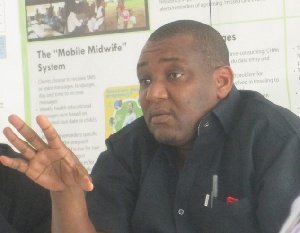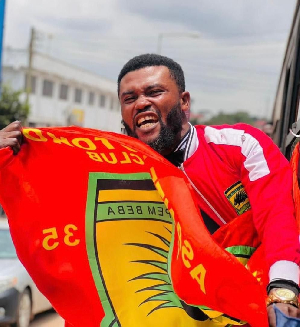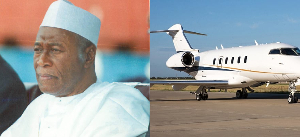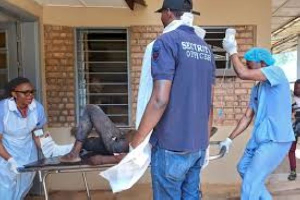BONABOTO, the association who badmouthed multi-prize-winning, Dr. John Koku Awoonor-Williams for 2 years with strong allegations that he illegally took some official vehicles away from the Upper East region on his transfer in 2015, has suffered a downfall.
The group gave the former Upper East Regional Director of Health Services a bad press on a far-reaching scale as a result of which the national headquarters of the Commission on Human Rights and Administrative Justice (CHRAJ) launched a comprehensive probe on him for alleged abuse of office and corruption.
Former Director General of the Ghana Health Service (GHS), Dr. Ebenezer Appiah-Denkyira, who was also accused of complicity by the group, had to endure an exhaustive probity test under the ‘crushing mill’ of the country’s main anti-corruption body.
But CHRAJ, after a scope of investigations that took about 18 months to complete, has cleared both Dr. Awoonor-Williams and Dr. Appiah-Denkyira, saying the allegations levelled against them by Dr. Kofi Issah (who took over Dr. Awoonor-Williams’s office in 2015) and BONABOTO are false.
“The Commission, at the end of the investigation, has not made any adverse findings against the respondents for abuse of office/power as well as corruption. The allegations in the media to that effect, which prompted the Commission to commence the investigations, have not been borne out or cannot be substantiated,” said CHRAJ in a 71-page report signed by the Commissioner, Joseph Whittal.
CHRAJ Report confirms outcome of Starr News Investigations
It all began in 2016 when Dr. Kofi Issah, the immediate-past Upper East Regional Director of Health, made a public announcement that suggested his predecessor, Dr. Awoonor-Williams, had sneaked five official vehicles out of the region from the transport pool of the Upper East Regional Health Directorate.
Starr News established in 2017 that the claims made by Dr. Issah, who is now in charge of the Brong Ahafo region as a director, were untrue.
But BONABOTO, with open venom and all its might, rubbished the investigations, maintaining in a press statement widely circulated by three executive members— Francis Atintono, Stanley Abopaam and Vitus Azeem— that Dr. Awoonor-Williams took the vehicles along “when he reluctantly left on transfer”.
A Starr News report about a letter Dr. Issah wrote later in 2016 to the Ghana Health Service Council, expressing regrets and apologies over his “missing vehicles” claims, was also strongly contested as fabricated. The denial ‘evaporated’ only after Starr News made public a copy of that letter.
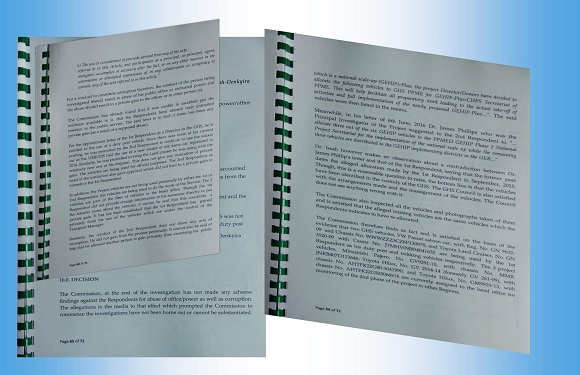
Excerpts of the CHRAJ report
Then, some members of the association unleashed a series of attacks on Starr News’s Upper East regional correspondent (who undertook the investigations) and staged a media onslaught that reportedly saw the hard-won honour of Dr. Awoonor-Williams sentenced to the gallows, his image publicly hauled onto a chopping board and his international reputation torn to shreds.
And despite the Director General at the time clearly stating in a letter in 2016 that Dr. Issah was only out to tarnish the image of his predecessor for no justifiable reasons, BONABOTO still pressed government in 2017 to “bring finality to this matter” by probing Dr. Awoonor-Williams and the Director General himself. And in bringing the demanded “finality” to the issue, CHRAJ, in a wide-ranging report released in June, 2018, affirmed just what Starr News investigations had revealed in 2017.
The allegations triggered by Dr. Issah and sustained by BONABOTO, per a statement attributed to the former Director General on the page 15 of the CHRAJ report, “dented the image of the respondents not only in Ghana, but all over the world”.
20 rare things Dr. Awoonor-Williams did for the region before he was “driven away”
In his quest to build a healthy, wealthy region, Dr. Awoonor-Williams did not hold anything back both personally and within his capacity as the Upper East Regional Director of Health Services.
“He did a lot for the Upper East; that is why many development partners often compared him to the great A.A. Ampofo who also did so much for Upper East many, many years ago. It’s unfortunate, this is what BONABOTO has done to him, accusing him everywhere on air, to the BNI and everywhere that he illegally took some official cars along when he was transferred. I met a relative to Dr. Awoonor-Williams who told me how the false accusations really pierced the man’s heart and ran down his reputation.
“How can that region develop? Is this what the region does to good people? After all the man did for them, this group deliberately treated him in a manner not different from a group of false accusers burying an innocent helper alive with only his head exposed and stoned the head in public with concrete bricks until he bled to death. Awoonor bled, only he didn’t die, after all the good things he did,” said a distraught close associate to Dr. Awoonor-Williams, Professor David Asare.
Before he was transferred to the Upper East region in February, 2008, Dr. Awoonor-Williams was a medical superintendent at the Nkwanta District Hospital in the Volta region.
Whilst he was at that hospital, he transformed it from scratch into a 140-bed facility, using internally generated funds and with some donor support he solicited.
He also developed a community volunteer health worker programme in that part of the country which later informed a national policy that brought about the famous Community-based Health Planning Services (CHPS) compounds nationwide. He did many things for the development of the Upper East region throughout his 7 years as the regional health chief.
Twenty of those achievements are listed below:
1. Refurbished a 3-storey office block of the Upper East Regional Health Directorate.
2. Constructed a 2-storey in-service training centre for the Ghana Health Service.
3. Renovated residential quarters for nurses, midwives and doctors in the region.
4. Established a satellite campus for Degree in Public Health Nursing Programme at Navrongo.
5. Constructed an ultramodern walk-in cold room in the regional capital for storage of vaccines for the region.

6. Offered personal incentives to health professionals to accept posting to deprived, rural corners of the region.
7. He personally assisted many staff acquire their own vehicles under the Ministry of Health Staff Vehicle Hire Purchase Scheme as motivation to accept posting to hard-to-reach areas in the Bawku Traditional Area and some other deprived parts of the region.
8. Supported poor widows and orphans and gave scholarship support to many second-cycle and tertiary students in the region throughout his tenure as a regional director.
9. Introduced the Mobile Technology for Community Health (MoTech) Initiative to help the region and Ghana attain the MDGs 4 and 5.
10. Introduced the Ghana Essential Health Intervention Project (GEHIP) in the region through a proposal he wrote to the Doris Duke Charitable Foundation (DDCF) to help address maternal deaths and infant morbidity in three districts in the region.
11. Wrote another proposal that won a 9-million-US-dollar funding from the Korean International Cooperation Agency (KOICA) to achieve the same objectives of GEHIP across the region under what is known as the CHPS Plus Project.
12. Introduced motorised tricycle ambulances to bridge ambulance gap in difficult-to-reach areas of the region.
13. Continuously supported the Ghana Red Cross Society, the Ghana Coalition of NGOs in Health, the Red Cross Mothers and several other local GHS partners to promote health in rural communities.
14. Inspired and facilitated the expansion of the Upper East Regional Hospital (an ongoing project).
15. Acquired a van for delivery of medicines and other non-consumables to health facilities across the region.
16. Established a laboratory at the Regional Medical Stores at Zuarungu for the preparation of mixtures and syrups.
17. Also undertook important research work that informed national policy as well as impressive staff development and capacity building during his seven years as Upper East Regional Director of Health.
18. Supported poor patients financially and assisted several sick persons to receive tertiary care out of the region.
19. Provided a fully furnished office and a restroom for drivers at the Regional Health Directorate and constructed a canteen for the Regional Health Administration.
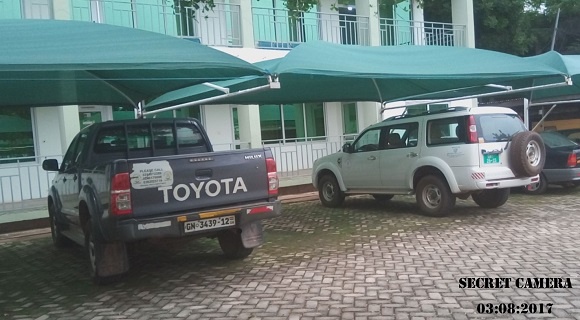
20. Facilitated construction of CHPS compounds in areas including the Builsa North District, the Builsa South District, the Kassena-Nankana Municipality, the Kassena-Nankana West District, the Bawku Municipality, the Binduri District, the Bolgatanga Municipality and the Bongo District. He told investigators in the CHRAJ report he was driven away from the region amid threats by a group that backed Dr. Issah to take over from him in a hurry.
Chief Justice petitioned against Magistrate
Whilst Starr News was investigating the claims Dr. Issah made against Dr. Awoonor-Williams, sources at the Upper East Regional Health Directorate intimated that Dr. Issah had unduly taken a project car for his wife. The grey pickup, with registration number GN 3439 12, was found at Dr. Issah’s official residence throughout an undercover investigation that lasted from October, 2016, to January, 2017.
The pickup, per a GHS-stamped document made available to Starr News by sources, was one of the project vehicles in question.
When contacted by Starr News about the findings on his compound, Dr. Issah ‘boasted’ in an SMS, stating that he would give more [official] vehicles to his relatives. Afterwards, he asked a popular member of a political communications team to plead with Starr News on his behalf not to publish the findings. He also sent two staff from the directorate to the Starr News correspondent (who conducted the investigations) to deliver a message he would like to meet with him.
Starr News, suspecting the invitation was an inducement move, turned down the call and went ahead with the publication. After the publication, the pickup found on Dr. Issah’s compound was returned to the directorate.
Subsequently, some members of BONABOTO descended heavily on the correspondent and backed one Hajira Ibrahim (who said she was Dr. Kofi Issah’s wife) to file a defamation suit against the reporter in March, 2017. In September, that same year, the correspondent filed a petition to the Chief Justice, Her Ladyship Sophia Abena Boafoa Akuffo, against the magistrate at the Bolgatanga District Court, His Worship Osman Abdul-Hakeem, over some biases he openly showed and a strong prejudicial statement he made in the courtroom.
In May, 2018, the magistrate ruled in favour of the plaintiff, in what court observers say is a confirmation of the prejudicial statement he had made in 2017. The defendant was still expecting a reply from the Office of the Chief Justice on the petition when the magistrate ruled unexpectedly in his absence and ordered him to pay the plaintiff GH¢33,000 for defamation and damages.
There is more news ahead in series on the revelations contained in the CHRAJ report.
General News of Wednesday, 11 July 2018
Source: starrfmonline.com





